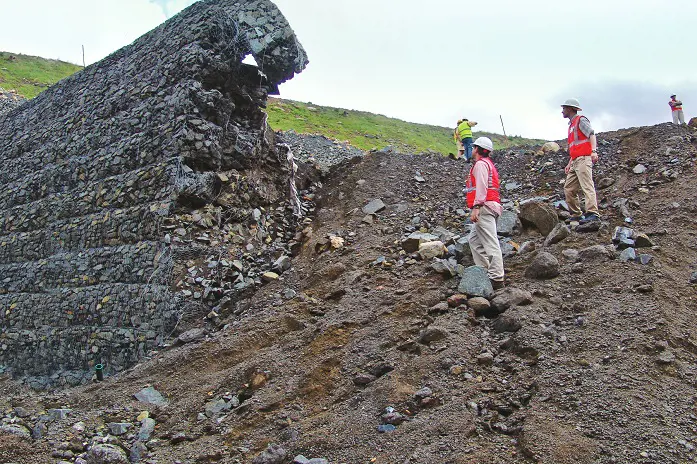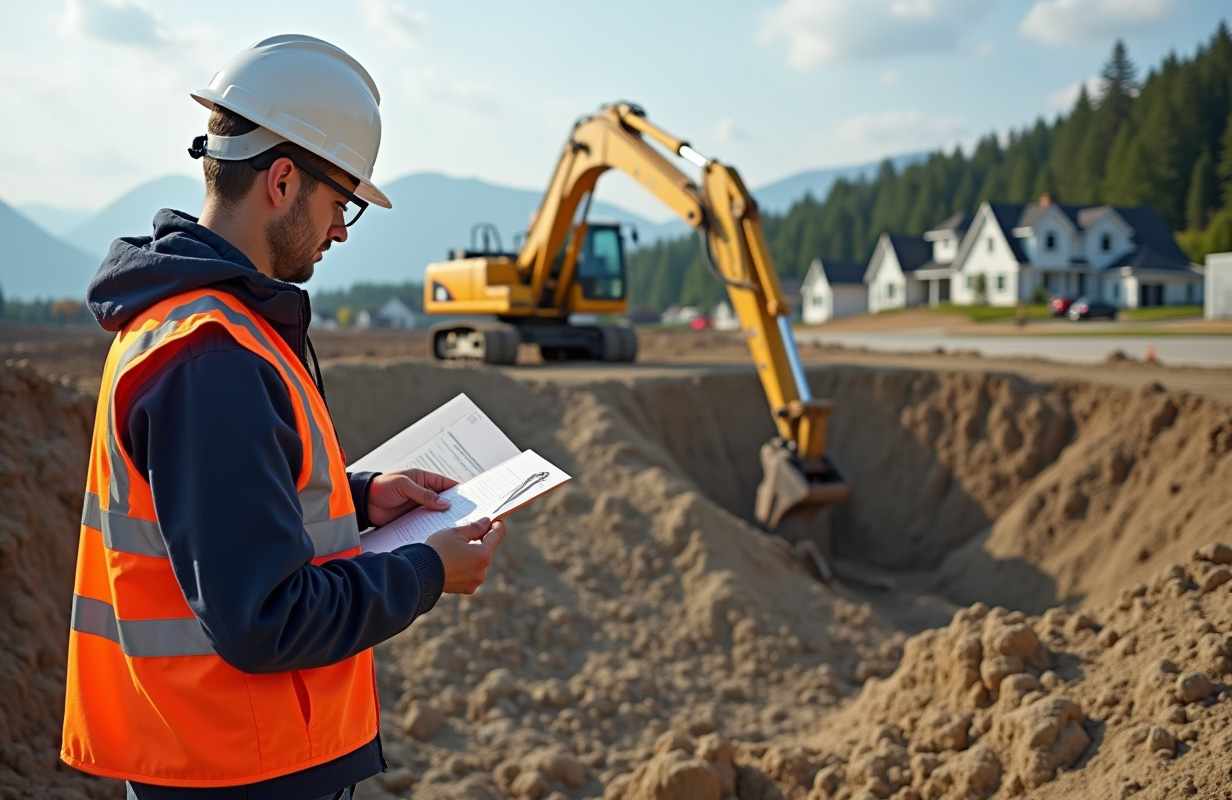Exploring the Interdisciplinary Nature of Geotechnical Design and Its Impact on Ground Improvement and Structure Design
The interdisciplinary nature of geotechnical design plays an essential role fit cutting-edge ground renovation methods and structure design methods. By incorporating insights from architectural, ecological, and geological techniques, geotechnical engineers are outfitted to deal with complicated dirt actions and site-specific difficulties. This collective approach not only enhances the efficacy of techniques such as dirt stabilization and dynamic compaction yet also guarantees that tasks comply with sustainability concepts. What implications does this interdisciplinary synergy have for future developments in the area, especially in the context of arising building technologies?
Review of Geotechnical Design
Geotechnical engineering is a vital branch of civil design that concentrates on the habits of planet materials and their communication with structures. This discipline encompasses the study of groundwater, dirt, and rock, aiming to recognize their residential properties and exactly how they impact the performance of civil design tasks. Geotechnical designers evaluate the hydraulic and mechanical behavior of these materials to guarantee the stability and security of structures such as structures, bridges, and retaining walls.
The scope of geotechnical engineering includes website investigations, dirt tasting, and screening, in addition to analysis of dirt auto mechanics and rock auto mechanics. Designers use innovative strategies to review ground problems, determine potential hazards, and style effective ground improvement solutions. This may include techniques such as soil stablizing, grouting, and using geosynthetics, which boost the toughness and durability of the ground.
In addition, geotechnical design plays an important duty in foundation layout, identifying appropriate structure kinds based upon dirt attributes and filling problems. By incorporating extensive screening and analysis, geotechnical engineers add dramatically to the sustainability and durability of framework, making certain that frameworks can withstand environmental and functional stress and anxieties with time.
Secret Interdisciplinary Relationships

Furthermore, ecological engineering plays an essential function in evaluating the impact of geotechnical activities on the bordering community. This collaboration is crucial for developing sustainable methods that decrease environmental destruction throughout excavation or ground improvement processes.
Moreover, the assimilation of geotechnical design with geology enhances the understanding of subsurface problems, promoting even more exact website characterizations (geotechnical specialist). This connection aids in hazard assessment, especially in locations susceptible to landslides or seismic task, therefore informing risk reduction methods
Lastly, advancements in innovation have actually resulted in interdisciplinary cooperation with information scientific research and geoinformatics. These fields add to improved modeling and evaluation strategies, enabling a lot more precise predictions of soil behavior under numerous problems. Therefore, the interconnectedness of these self-controls enriches geotechnical engineering, advertising technology and efficiency in structure design and ground enhancement.
Ground Enhancement Methods
Ground enhancement techniques are important methods utilized to improve the design residential properties of soil, thus boosting its load-bearing capability and stability. These strategies are specifically crucial in areas where all-natural soil conditions are poor for supporting architectural tons or where environmental variables may endanger soil integrity.
Commonalities improvement techniques consist of soil compaction, which increases thickness and reduces void rooms, and grouting, which includes injecting materials right into dirt to fill voids and bind fragments together - geotechnical specialist. Various other methods see include the setup of soil nails and anchors, which offer added support, and the usage of geosynthetics to strengthen soil structures. Deep blending techniques, such as soil-cement columns, can additionally considerably enhance the strength and tightness of weak dirts
In addition, vibrant compaction and vibro-replacement techniques are usually employed to enhance dirt residential properties in situ. These techniques can alleviate issues associated with settlement and liquefaction, particularly in seismic locations. By employing a combination of these cutting-edge strategies, geotechnical designers can efficiently deal with site-specific difficulties, ensuring that the foundation systems will execute appropriately under expected loading problems, thus adding to overall task success.
Structure Design Considerations
Efficient structure design considerations are critical for the durability and stability of structures. A properly designed structure has to sufficiently sustain the lots of the structure while suiting soil problems, environmental aspects, and possible modifications in time. Key factors include dirt bearing capability, settlement attributes, and groundwater conditions.
Comprehending the dirt profile through read more geotechnical examinations is crucial, as it educates the choice of foundation type-- be it superficial, deep, or specialized methods such as stack foundations or floor covering structures. The awaited lots, including live, dead, and environmental lots, have to be precisely determined to make certain the foundation can stand up to possible failure devices, such as sliding, rescinding, or extreme settlement.
In addition, factors to consider for frost depth, seismic activity, and possible dirt liquefaction in seismic areas are critical. In addition, water drainage and dampness control need to be incorporated right into the foundation layout to alleviate issues related to hydrostatic stress and dirt disintegration.
Partnership amongst architects, engineers, and geotechnical specialists is essential to create an extensive foundation design that not just satisfies regulative demands however likewise makes sure the lasting efficiency and safety of the framework. Inevitably, extensive preparation and cutting-edge services are needed to deal with the complexities inherent in foundation style.
Situation Researches and Ideal Practices

One remarkable situation research study includes the usage of deep soil mixing in a skyscraper building project in a seismic area. This technique significantly enhanced the soil's stamina and security, allowing for a safer and a lot more effective structure system (geotechnical specialist). The project highlighted the significance of selecting proper ground renovation techniques based upon site-specific problems, consisting of dirt kind and loading needs
Another example is the application of vibrant compaction for boosting the bearing ability of weak dirts under an industrial facility. This approach company website efficiently decreased settlement issues and enhanced overall website efficiency, demonstrating the efficiency of combining standard engineering practices with modern technology.
Ideal techniques obtained from these instance researches emphasize the requirement of thorough site examinations, collaboration amongst multidisciplinary teams, and the unification of sophisticated modeling tools. By embracing these lessons, geotechnical engineers can optimize structure layouts and ground improvement methods, inevitably causing more secure and a lot more sustainable building end results.
Verdict
In verdict, the interdisciplinary nature of geotechnical engineering considerably improves ground improvement and structure style. By integrating concepts from different engineering techniques, tailored techniques are created to deal with specific challenges related to dirt properties and ecological effects.
The range of geotechnical design consists of website investigations, dirt sampling, and screening, as well as analysis of dirt mechanics and rock technicians. The connection in between geotechnical engineering and architectural engineering is especially critical, as the efficiency of structures is greatly affected by dirt behavior and properties.Typical ground improvement techniques include soil compaction, which increases density and reduces void areas, and grouting, which involves infusing products into soil to fill up spaces and bind particles with each other. Other strategies consist of the setup of dirt nails and anchors, which supply added support, and the use of geosynthetics to reinforce dirt structures. A properly designed foundation has to sufficiently sustain the lots of the building while fitting soil conditions, ecological factors, and prospective modifications over time.
Comments on “Top Factors to Hire a Geotechnical Specialist for Your Construction Projects”